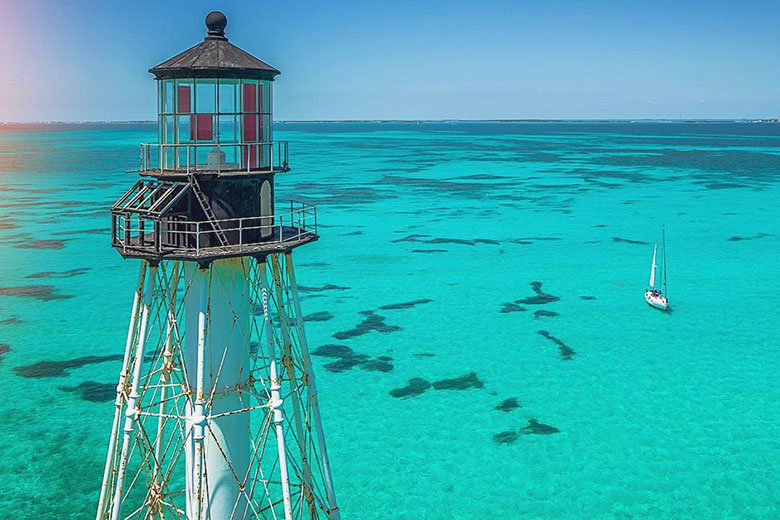Email Cell -305.393.1245
HOME » Florida Keys

The Florida Keys have always been a part of me. Growing up in South Florida, fishing here wasn’t just a hobby, it was a way of life. From an early age, I learned the importance of tides, and the movements and habits of fish, experiences that shaped not only my passion but my career. Today, as a full-time fishing guide based in Islamorada, I share that passion with others, introducing anglers to one of the most amazing fisheries in the world.
Islamorada, my home and the “Sportfishing Capital of the World,” was officially incorporated as a village on December 31, 1997. The name, meaning “Purple Isle” in Spanish, is believed to have come from early explorers, inspired by the plentiful purple blooms of the bougainvillea that once covered the islands.
Sitting at the crossroads of the Gulf Stream, Florida Bay, and the Atlantic, and near the vast shallows of Florida Bay and Everglades National Park. Islamorada’s waters are a sight fisherman’s dream. Flats, banks, basins, and mangrove islands hold gamefish like tarpon, bonefish, and permit, making every day on the water a new challenge. The decision to incorporate the ‘Village’ gave locals more control over zoning and conservation, ensuring that this place remains a viable fishery for generations to come.
Long before sportfishing put our islands on the map, Native Americans, Spanish explorers, and early settlers relied on this ecosystem for survival. By the mid-19th and early 20th centuries, the Keys became a destination for adventurers and big-game anglers drawn by the promise of giant tarpon and other prized species.
Pioneers like Zane Grey and Ernest Hemingway helped cement the region’s reputation, while later, tournament fishing along with innovations in skiff design, and fly-fishing techniques took the sport to new heights. Today, the Keys remain one of the world’s premier fishing destinations, attracting anglers from across the globe in search of legendary fish and unforgettable experiences.
I’ve spent decades learning these waters, reading the conditions, predicting fish behavior, and perfecting the skills needed to make every shot count. Guiding isn’t just about putting clients on fish; it’s about teaching them the art and enjoyment of the pursuit, helping them understand the patience, precision, and respect required to succeed. Watching a client make the perfect cast, seeing a fish turn and eat, and witnessing the sheer excitement of that connection never gets old – and every day I still learn something new.
The Keys have long been a proving ground for some of the most innovative fishing guides and saltwater anglers in history. Legends like Ted Williams and Jimmy Albright (the list is long) helped pioneer the sport here, and I feel a deep connection to that legacy every time I push off from the dock. But with that history comes responsibility. Over the years, I’ve witnessed how increased fishing pressure, habitat loss, and extreme weather have impacted the Keys and the Glades. That’s why I’m a strong advocate for conservation, practicing catch-and-release, protecting critical habitats, and educating others about the importance of sustainable fishing.
My goal as a guide is simple: to give anglers an unforgettable experience on the water, to share the knowledge and passion that have defined my life, and to do my part in ensuring that future generations can experience the same incredible fishing that has made the Florida Keys so special.
Lorem ipsum dolor sit amet, consectetur adipiscing elit. Ut elit tellus, luctus nec ullamcorper mattis, pulvinar dapibus leo.
Everglades National Park began collecting entrance fees for all park visitors on January 10, 2019 – including anglers with licensed fishing guides, Effective January 2025, 7-day passes will be $35 per person. You may also purchase an annual Everglades National Park pass for $70. Children aged 15 and under are always admitted free.